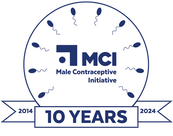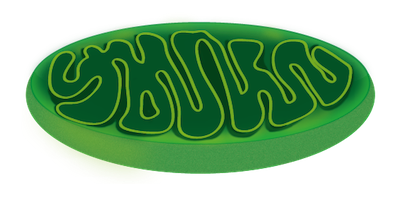|
(Image courtesy of: DBCLS 統合TV, CC BY 4.0) Mitochondria are known as the powerhouses of the cell as they are responsible for cell respiration (the process which produces energy). Their most prominent function is to generate adenosine triphosphate (ATP), the energy currency of cells. Mitochondria are structures within cells that convert the energy from food into a form that cells can use. Each cell contains hundreds or even thousands of mitochondria. They are located in the fluid that surrounds the nucleus, which is called the cytoplasm. It is important to note that ‘mitochondria’ is plural, with the singular form being ‘mitochondrion’. They are organelles, which are specialized structures within a living cell. The muscle cells in the heart contain far more mitochondria than any other organ in the human body, with around 5,000 mitochondria in every cell. Keep in mind that the number of mitochondria in each cell reflects its energy requirement: the more energy an organ needs, the more mitochondria its cells will have. Sperm cells also contain mitochondria in their tails, which create the energy needed for intensive processes like hyperactivation and motility. In sexual reproduction, mitochondria are typically inherited only from the mother as the mitochondria in sperm are usually destroyed by the egg cell after fertilization. Nuts & Bolts: Mitochondria To learn more about, please visit our series of posts about male reproduction and contraception: Key terms: Cytoplasm - the material or protoplasm within a living cell, excluding the nucleus. Nutrient - a substance that provides nourishment essential for growth and the maintenance of life. Organelle - any of a number of organized or specialized structures within a living cell. For additional terminology related to male contraception and the male reproductive system, please visit our glossary: Sources/References: Sriram G. Garg, William F. Martin, Mitochondria, the Cell Cycle, and the Origin of Sex via a Syncytial Eukaryote Common Ancestor, Genome Biology and Evolution, Volume 8, Issue 6, June 2016, Pages 1950–1970, https://doi.org/10.1093/gbe/evw136 Kimball, J.W. (2006) "Sexual Reproduction in Humans: Copulation and Fertilization," Kimball's Biology Pages (based on Biology, 6th ed., 1996). Campbell NA, Williamson B, Heyden RJ (2006). Biology: Exploring Life. Boston, Massachusetts: Pearson Prentice Hall. ISBN 978-0-13-250882-7. Henze K, Martin W (November 2003). "Evolutionary biology: essence of mitochondria". Nature. 426 (6963): 127–128. McBride HM, Neuspiel M, Wasiak S (July 2006). "Mitochondria: more than just a powerhouse". Current Biology. 16 (14): R551–60. Voet D, Voet JG, Pratt CW (2006). Fundamentals of Biochemistry (2nd ed.). John Wiley and Sons, Inc. pp. 547, 556. ISBN 978-0-471-21495-3. Andersson SG, Karlberg O, Canbäck B, Kurland CG (January 2003). "On the origin of mitochondria: a genomics perspective". Philosophical Transactions of the Royal Society of London. Series B, Biological Sciences. 358 (1429): 165–77, discussion 177–9. doi:10.1098/rstb.2002.1193. "Paternal transmission of mitochondrial DNA is (fortunately) rare". Annals of Neurology. 54 (4): 422–424. Thyagarajan B, Padua RA, Campbell C (November 1996). "Mammalian mitochondria possess homologous DNA recombination activity". The Journal of Biological Chemistry. 271 (44): 27536–27543. For additional publications related to male contraception and the male reproductive system, please visit our publications page:
Comments are closed.
|
Categories
All
Archives
June 2024
|
|
|
Donate to Male Contraceptive InitiativeYour generous donation makes a difference!
|
© Male Contraceptive Initiative. All rights reserved.


 RSS Feed
RSS Feed
